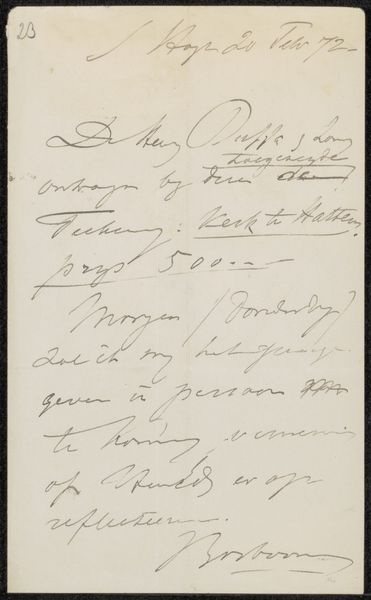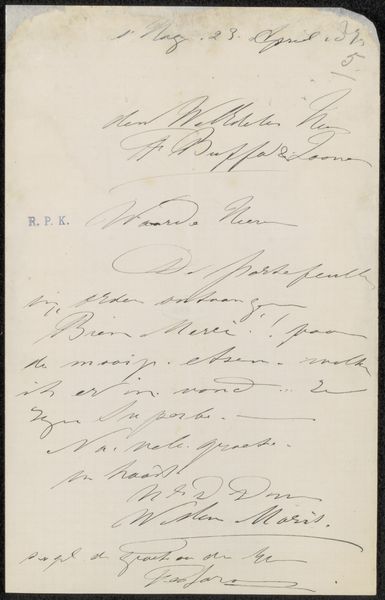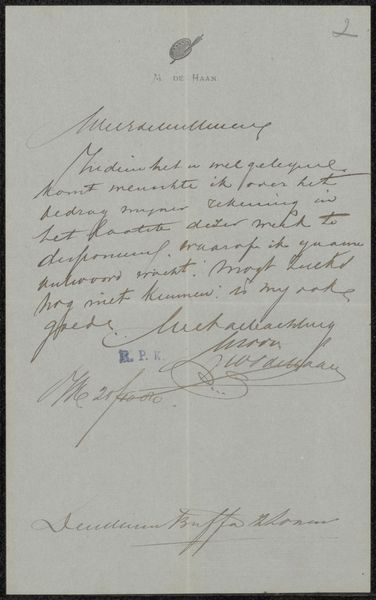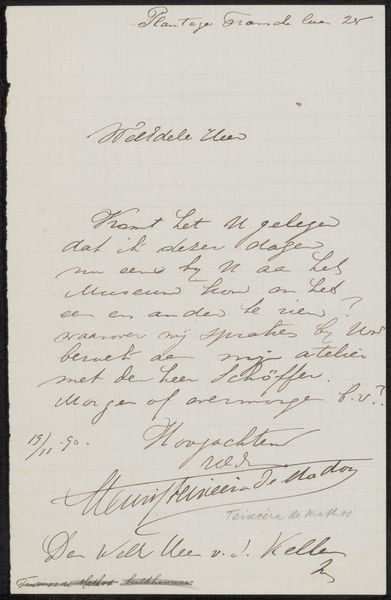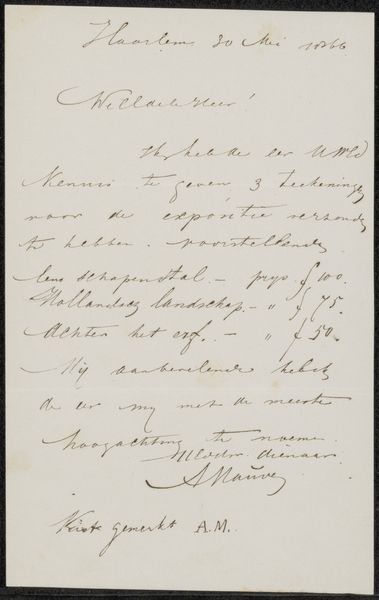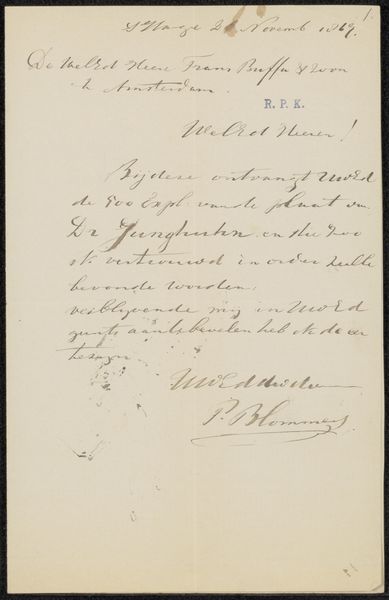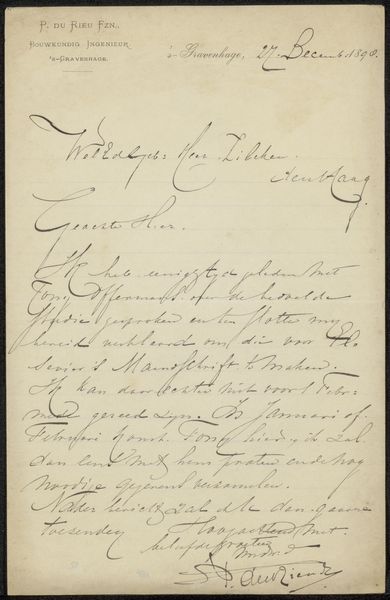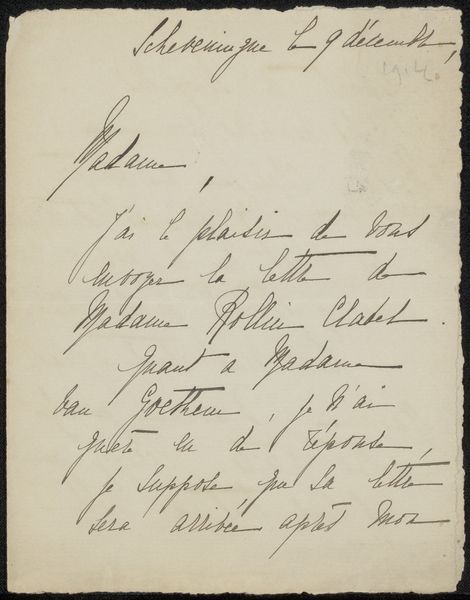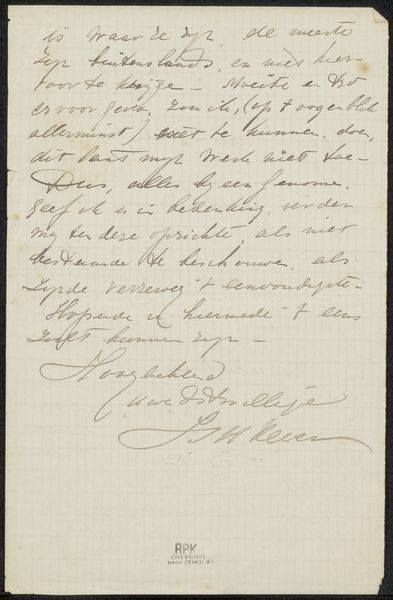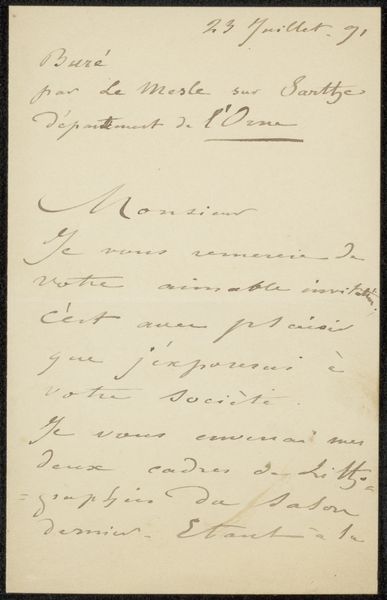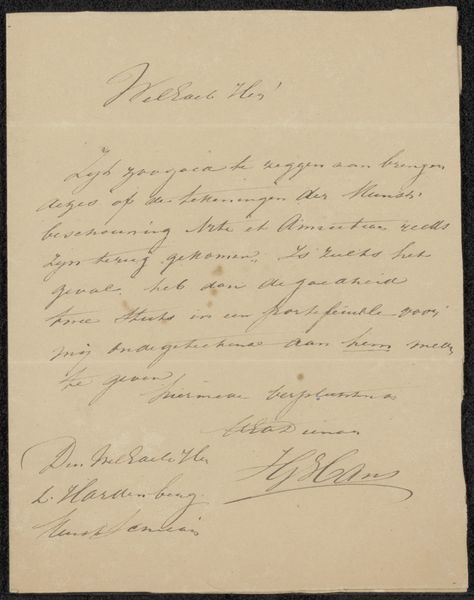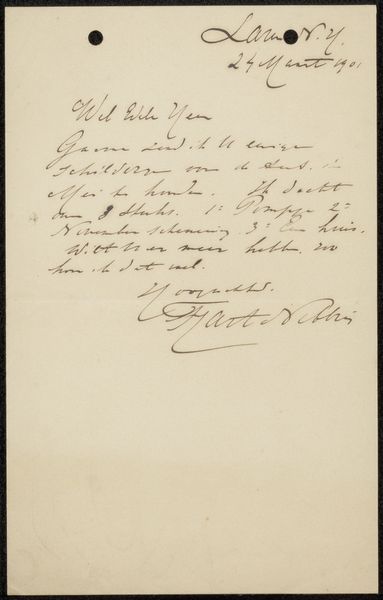
drawing, paper, ink
#
portrait
#
drawing
#
hand written
#
paper
#
ink
#
calligraphic
#
calligraphy
Copyright: Rijks Museum: Open Domain
Curator: We're looking at "Brief aan Philip Zilcken," a drawing made with ink on paper by Ernst Witkamp sometime between 1867 and 1897. What’s your first take on this handwritten piece? Editor: The immediate impression is intimacy, almost voyeuristic. There’s something very personal about reading someone’s mail, and the swirling script certainly adds to that feeling of direct access to the artist’s thoughts. Curator: Indeed. Notice the pressure of the ink, how it varies across each stroke, creating a rhythmic flow. The letter isn't perfectly spaced or aligned; it adheres to function, yet remains a testament to the author’s direct input in a way typed texts often fail to capture. Editor: You’re right, the visual aspect of the handwriting transcends the literal text. The flourishing signature, the abbreviation of "Amsterdam," they almost act like personalized emblems. A reader in Zilcken's time likely would have easily discerned social status and personality from the script itself. Beyond the informative content, consider how it functions as an intentional act of communication using semiotic clues. Curator: Precisely. And that's where the structural integrity lies. The deliberate strokes construct words that function to sell or to give away "Houtskoolteekening." In other words, charcoal drawings. It all centers around transaction. It may feel private, but it really alludes to economy. Editor: Fascinating, yes. Consider how sending that note would be very different today from an email. Here is tangible history, a human presence transmitted across years, each imperfection an indelible element of authenticity. It provides context about society and culture through artifact. What value do these things bring? And for today's audiences, is it that the human is what resonates, most of all? Curator: Perhaps the texture offers the strongest resonance. How we receive art matters and shapes reception. Consider how digitization mediates materiality but increases distribution. Editor: Indeed. I’m struck by how this simple artifact invites so many complex questions. Curator: Agreed. It gives an amazing amount of information through material elements alone.
Comments
No comments
Be the first to comment and join the conversation on the ultimate creative platform.
